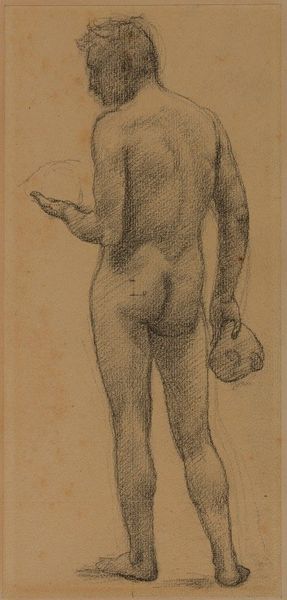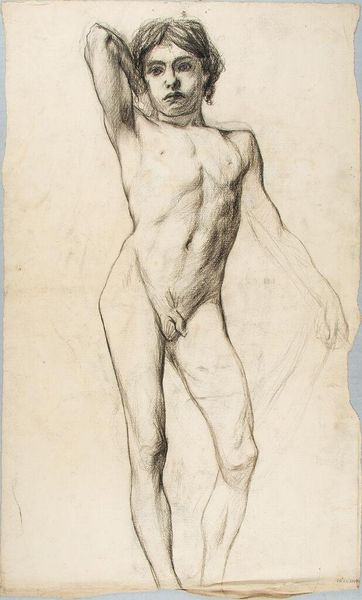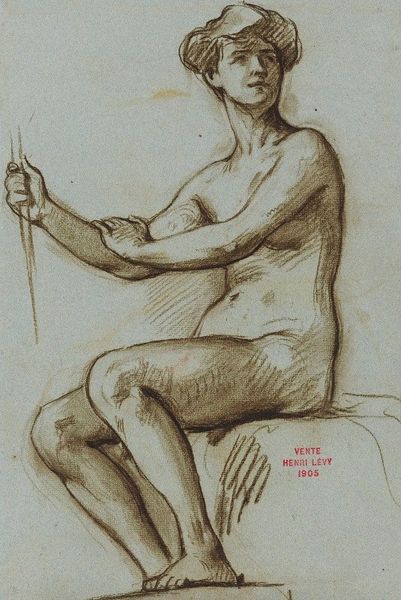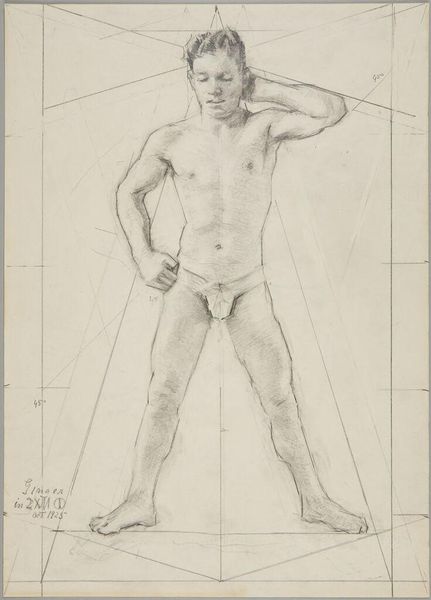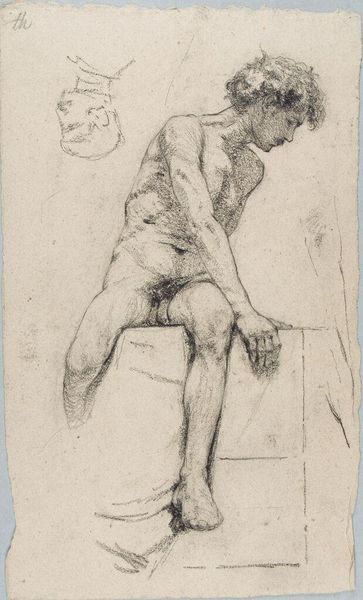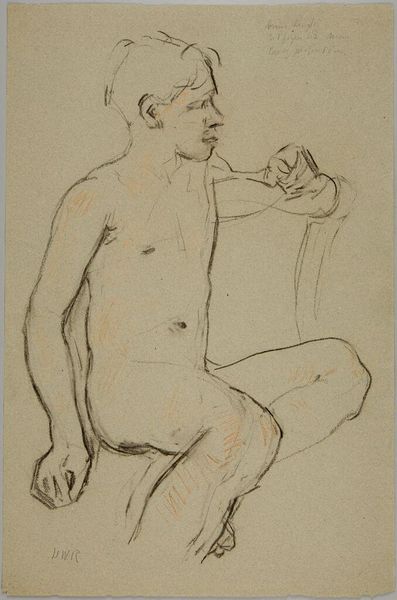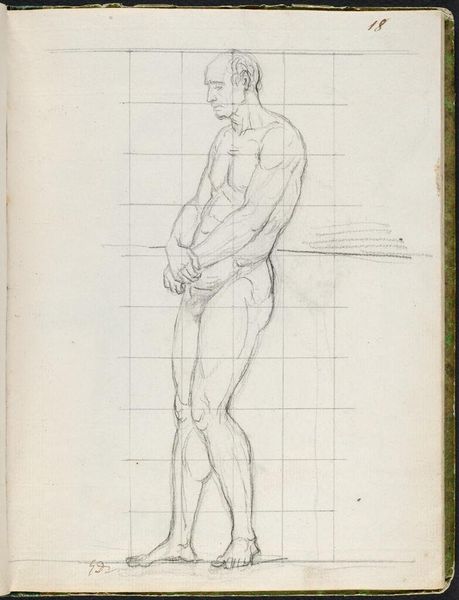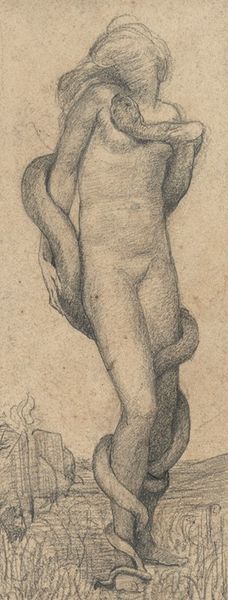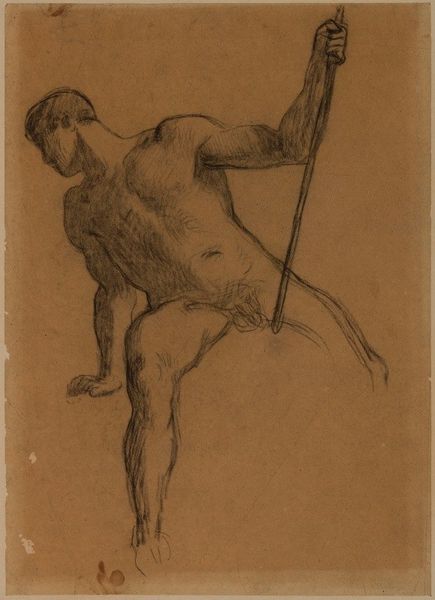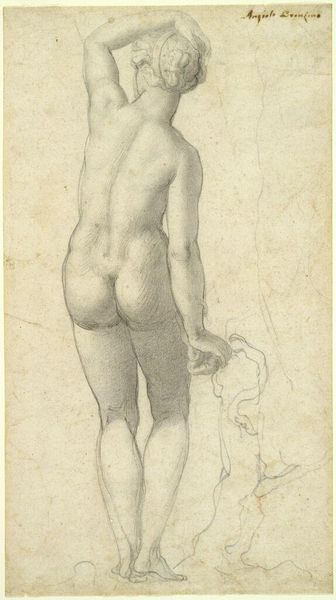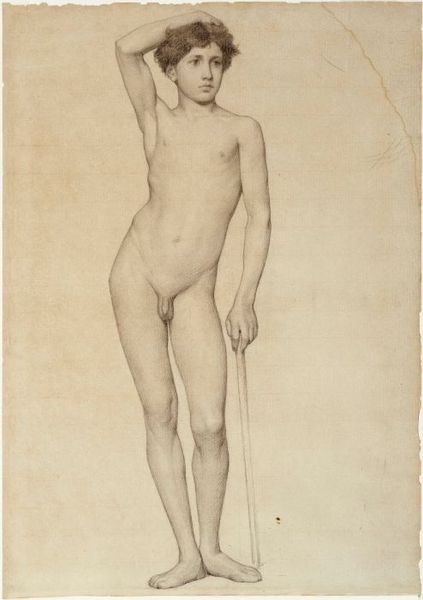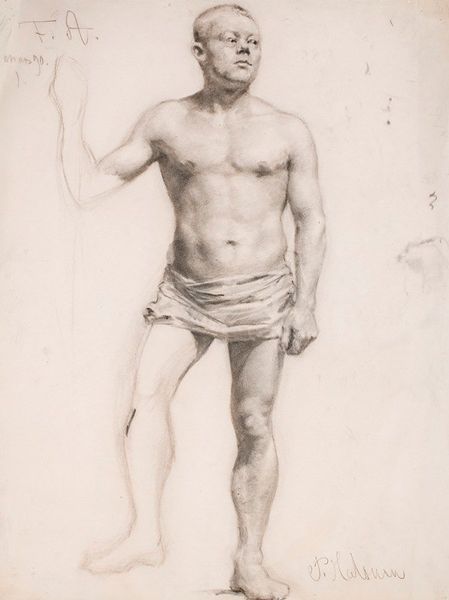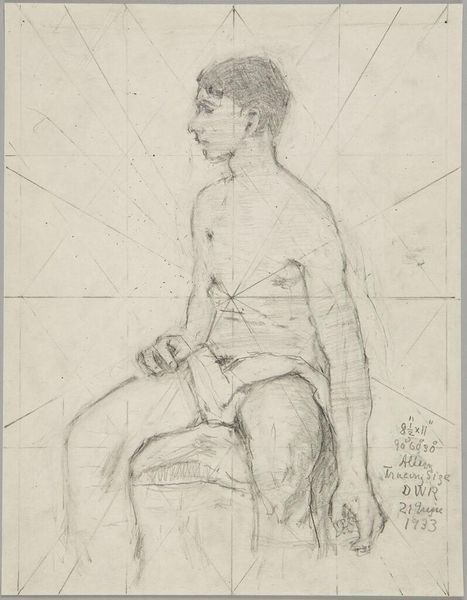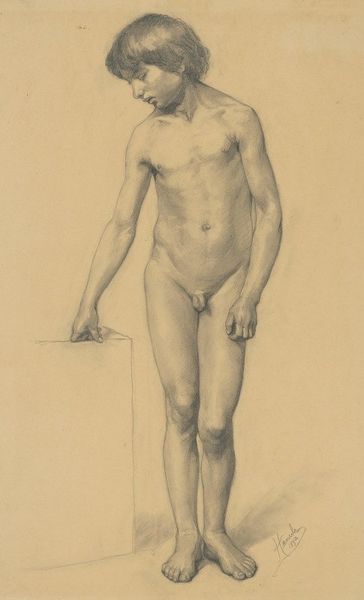
drawing, charcoal
#
portrait
#
drawing
#
charcoal drawing
#
figuration
#
charcoal
#
history-painting
#
academic-art
Copyright: Public Domain: Artvee
Editor: Here we have "Seated Man Facing Forward, Holding an Oar Between His Legs" by Pierre Puvis de Chavannes, created sometime between 1883 and 1886. It's a charcoal drawing. It feels like a very academic figure study. What stands out to you? Curator: I see the legacy of academic training, absolutely, but through an activist lens, it invites us to question how the male nude has been constructed within Western art. This figure, though seemingly classical, exists within a historical context where representations of the body are inextricably linked to power, gender, and sexuality. Look at the grid. It indicates a careful process, but to what end? Editor: He is seated casually, holding an oar, gazing away. It almost feels like he’s waiting for something. Is the oar symbolic? Curator: The oar certainly alludes to action, potential. But consider how the figure is posed versus how it’s constructed with that visible grid. Who is this man? What is his class, his social standing? Does his nakedness render him vulnerable, or is it a signifier of a classical ideal that obscures other possible identities? What are the politics embedded in how Puvis de Chavannes chooses to depict him, particularly within the societal norms of the late 19th century? Editor: So you’re saying we need to look beyond just the surface representation and consider the underlying social and political messages? Curator: Exactly. Art is never created in a vacuum. Examining the social and historical context allows us to critically engage with the work, unveiling its complex layers of meaning and challenging conventional interpretations. Editor: That's fascinating. I never considered how much history and theory could be packed into what seemed like just a figure study. Curator: And I think that perspective makes looking at art so much richer and more enlightening.
Comments
No comments
Be the first to comment and join the conversation on the ultimate creative platform.
